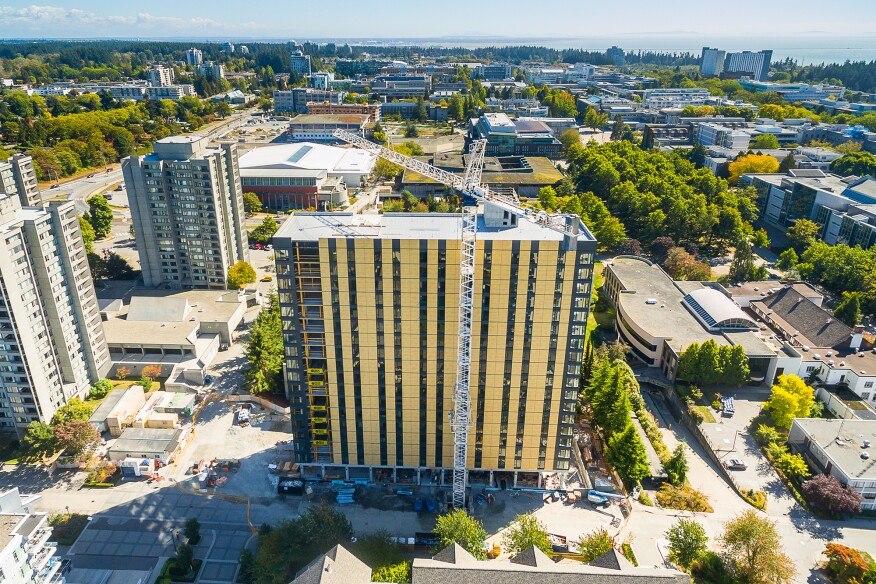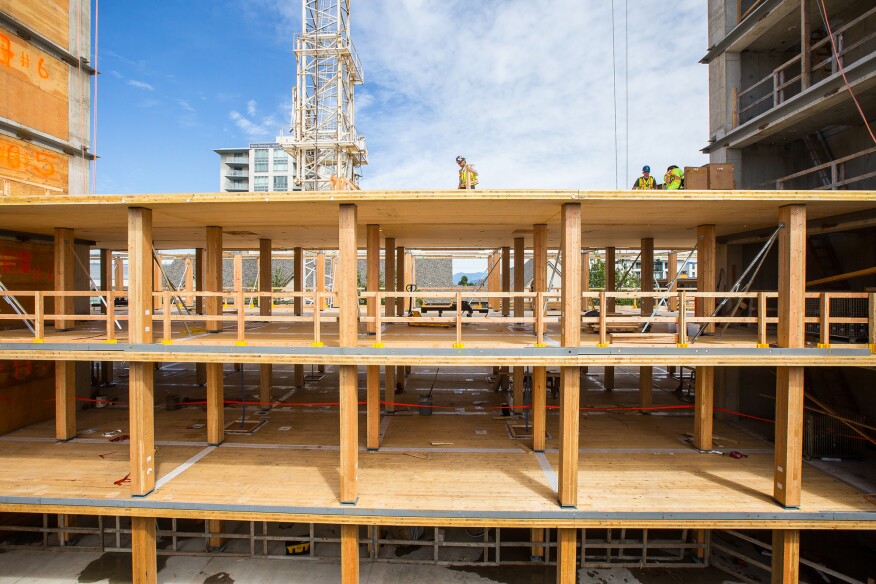
The never-ending quest for the title of world’s tallest building has taken a more modest and sustainable path: the world’s tallest wood building. With the strength of mass timber products, such as cross-laminated timber panels, laminated veneer lumber, and glue-laminated (glulam) members, rivaling that of steel and reinforced concrete, a steady stream of wood skyscrapers has made its way on the boards and into construction.
Yesterday, the University of British Columbia (UBC), in Vancouver, announced the completion of the wood structure and façade of its 18-story, 174-foot-tall Brock Commons student residence, claiming the title of tallest timber structure, for now. The title was previously held by Treet, a modular 14-story, 160-foot-tall housing project wrapping up construction in Bergen, Norway.
Designed by local firm Acton Ostry Architects, local structural engineering firm Fast + Epp, and tall-wood adviser Architekten Hermann Kaufmann, in Vorarlberg, Austria, Brock Commons utilizes a combination of mass wood, concrete, and steel components. The 162,700-square-foot building sits on a concrete foundation and incorporates two concrete stair cores. CLT panels supported by glulam columns make up the 17 floor plates above grade. Steel connectors, at the intersections of the wood floor slabs and columns, transfer the loads between columns as well as provide a bearing surface for the CLT floor panels.


The tower is topped by a roof comprising steel beams and decking, and clad in prefabricated wall panels, 70 percent of which is made from a wood-fiber high-pressure laminate.
Brock Commons “reflects UBC’s leadership in sustainable construction and our commitment to providing our students with more on-campus housing,” said UBC president Santa Ono in the institution's press release. The 404-bed tower will have 272 studios and 33 four-bedroom units, studying and gathering spaces, and a ground-floor lounge and study space for commuter students. (The university wants to add more than 2,000 beds to its campus by 2017, and another 640 beds in 2019.) Brock Commons will also serve as a case study for interdisciplinary research and education projects for the university.


Brock Commons is pursuing LEED Gold certification from the U.S. Green Building Council. According to the press release, the project’s use of wood reduces its carbon footprint by 2,432 metric tonnes, the equivalent of removing 500 automobiles from the road for a year. It will also exceed the required fire ratings and seismic requirements.
The wood structure of the $51.5 million Canadian (approximately $39 million US) project was erected in August, less than 70 days after the prefabricated timber components, supplied by Penticton, Canada–based Structurlam, arrived on site.
Brock Commons is scheduled for completion in September 2017.



















